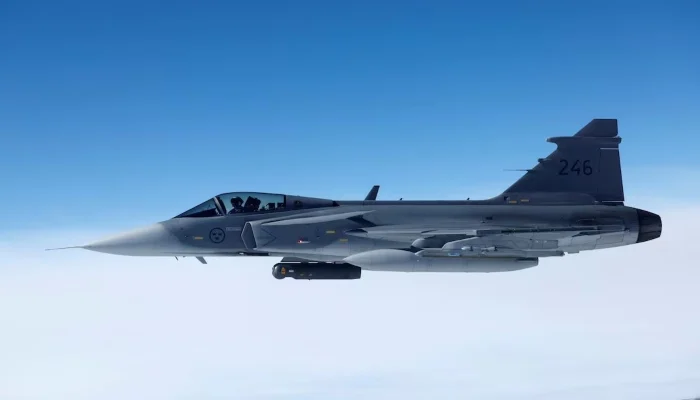Sweden’s Saab and German defense startup Helsing announced on Wednesday that they have conducted combat testing of a Gripen E warplane flown by Artificial Intelligence (AI) against a real fighter pilot. This marks a significant advancement in European efforts to compete in defense autonomy.
Last week’s trial represents the first publicly known instance where AI has been tested in a warplane for beyond visual range (BVR) combat, rather than merely a close-range dogfight. It is also the first time AI has controlled a fully-fledged jet, as opposed to a test plane.
In May of last year, then-US Air Force Secretary Frank Kendall flew in a modified F-16, designated X-62A VISTA, equipped with machine learning supplied by Shield AI. This demonstration showcased AI’s ability to engage in aerial battle with a crewed F-16.
The European trials, officially named “Project Beyond,” involved three flights conducted between May 28 and June 3. The companies stated that the final flight pitted Helsing’s “Centaur” AI agent, piloting a Gripen E, against a human-operated Gripen D fighter jet.
Funded by the Swedish government, the trial did not conclusively determine whether the human “Top Gun” or the AI-powered adversary performed better. However, the trial undeniably highlights the increasing focus on integrating AI and autonomy into combat systems.
“I would say it is not a given who will win… you have to be on your game as a pilot,” Saab’s Chief Innovation Officer Marcus Wandt, who is also a Swedish astronaut and former fighter pilot, told reporters. “If you need to retrain for a new weapon system or new tactics, it will be difficult to stay on par. Right now there are still pilots out there that will have a chance, but that will change fast.”
Next-Gen Combat Jets
This trial comes as Saab explores concepts for the next generation of combat jets, which are expected to combine crewed and uncrewed aircraft, under Sweden’s KFS future air combat study.
Sweden has not yet finalized its decision on whether to continue pursuing its own independent fighter plane as a successor to Saab’s home-grown Gripen. It had previously been involved with Britain’s Tempest fighter project but withdrew to focus on its own research when the program expanded to include Japan and Italy. The other major European fighter currently in development is the Franco-German-Spanish fighter program, widely known as SCAF.
Kendall, who stepped down with the outgoing Biden administration after leading the US next-generation fighter project that laid the groundwork for the recently launched F-47, has previously stated that AI decision-making will routinely overpower human capabilities. However, Western projects for incorporating AI into weapon systems generally stipulate that humans must retain the ability to intervene at some point.
Saab and Helsing executives emphasized that this AI initiative exemplifies the necessity for rapid development timelines and dismissed the traditional 10- or 15-year timetables of rival projects. Details of their trial were unveiled ahead of next week’s Paris Airshow, following months of simulator work during which executives stated that the Centaur AI agent was fed the equivalent of 30 years’ worth of experience each week.



